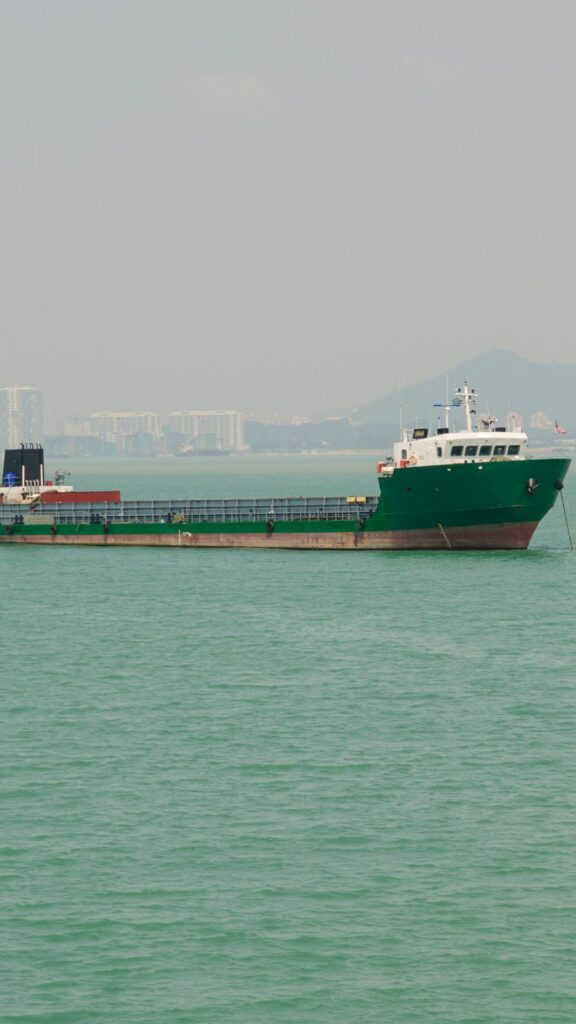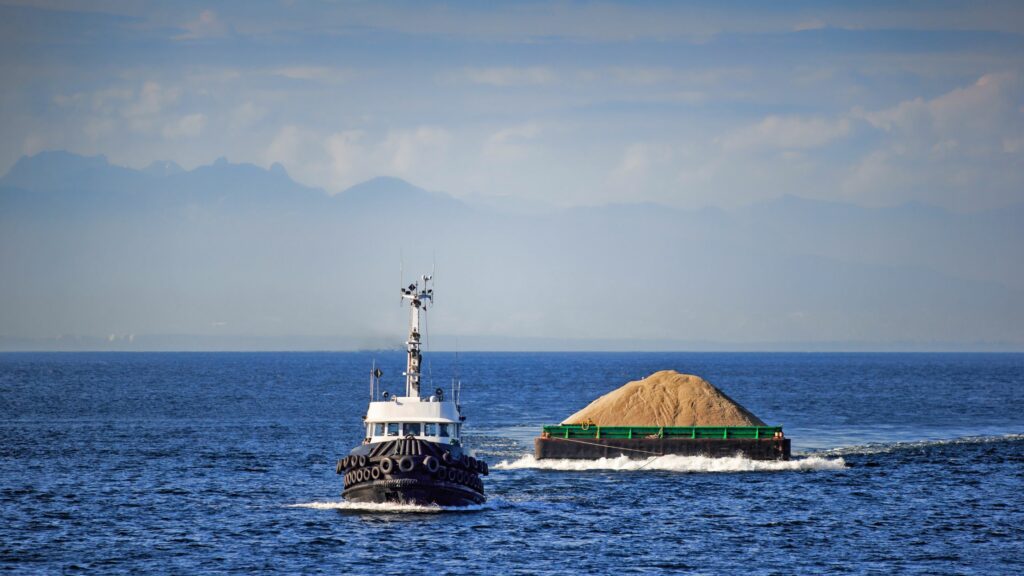Physical Address
304 North Cardinal St.
Dorchester Center, MA 02124
The Contract of Affreightment (COA) offers flexibility and efficiency in bulk shipping. COAs provide a tailored experience, making them a vital tool in maritime trade.
Key elements of a COA include agreements on quantity, shipment schedules, laycan, and freight rates. These components ensure smooth long-term cargo movements. The Single Voyage COA is particularly notable, offering a focused approach for optimizing specific cargo flows. Each aspect of a COA—from quantity specifications to agreed routes and vessels—brings unique strategies, operational details, economic implications, and adaptability to market changes.
The following sections will explore these elements in detail, showing how COAs facilitate a more predictable and efficient shipping process, making them a valuable option for shippers and carriers globally.

A Contract of Affreightment (COA) is a bulk shipping agreement that links shippers with carriers to transport large quantities of cargo over a set timeframe. Unlike a charter party, which is designed for single voyages or fixed periods, a COA covers multiple shipments, offering flexibility and operational efficiency for both parties. This contract is vital for sectors dependent on the consistent flow of commodities, such as oil, coal, or grain, where shipment volumes and schedules can vary.
The COA specifies the quantity of goods to be moved, the contract duration, and the freight rates, ensuring clarity and mutual understanding between the shipper and the carrier. It allows for adjustments in cargo types and quantities, adapting to the market’s changing needs. By focusing on agreed routes and vessels, the COA streamlines the process for transporting bulk commodities, highlighting its significance in global trade logistics.
Parties are drawn to Contracts of Affreightment (COA) for their strategic advantages in the bulk shipping and commodity trading sectors. COAs provide flexibility, cost predictability, and operational efficiency, which are crucial for industries with variable shipping volumes and schedules.
For industries like oil and gas, where the market is highly volatile, securing cargo space over an extended period is crucial. COAs provide oil companies with guaranteed vessel availability, ensuring that they can transport crude oil, refined products, and LNG according to market demands without the risk of vessel shortages. This is particularly valuable during peak demand seasons or when geopolitical events affect shipping routes and availability.
The grain shipping sector benefits immensely from the cost predictability that COAs offer. Agricultural products have seasonal production cycles, and prices can fluctuate significantly due to weather conditions, harvest yields, and global demand. By locking in freight rates with COAs, grain shippers can better manage their logistics costs, making financial planning more reliable and protecting against sudden spikes in shipping rates during harvest seasons.
Mining companies, especially those involved in the extraction and export of minerals like iron ore, coal, and bauxite, require flexibility in cargo types and quantities due to the varying demand for these commodities. COAs allow mining companies to adjust their shipment sizes and frequencies as market conditions change, without incurring penalties. This adaptability is crucial for maintaining efficient supply chains and meeting contractual obligations with buyers across the globe.
The key components of a Contract of Affreightment (COA) include the quantity of goods to be transported, minimum and maximum tonnage per shipment, duration of the agreement, freight rates and payment terms, and the specification of routes and vessels. Each of these elements plays a vital role in ensuring the agreement meets the operational and financial needs of both parties involved.
| Component | Description | Example |
|---|---|---|
| Quantity of Goods | Total volume of cargo covered by the COA | 1 million metric tons of iron ore |
| Minimum and Maximum Tonnage per Shipment | The range of cargo volume per shipment allowed under the COA | Minimum: 50,000 metric tons, Maximum: 100,000 metric tons |
| Duration of the Agreement | The timeframe over which the COA is effective, including start and end dates | January 2023 – December 2023 |
| Freight Rates and Payment Terms | Terms outlining the payment for transportation services, including any provisions for adjustments | Fixed rate of $20 per metric ton, adjustable based on the Bunker Adjustment Factor (BAF) |
| Specification of Routes and Vessels | Agreed upon shipping routes and types of vessels to be used for transportation | Routes from Australia to various ports in Asia using Capesize vessels |
For instance, a real-life example of a COA might involve a major shipping company, Global Shipping Co., and a commodity producer, ABC Commodities, agreeing to transport 1 million metric tons of iron ore over a 12-month period. The agreement specifies a minimum tonnage per shipment of 50,000 metric tons to accommodate the producer’s varying production output and market demand. The freight rates are fixed with provisions for adjustments based on fuel price fluctuations, and specific routes from the producer’s port in Australia to multiple destinations in Asia are agreed upon, utilizing a fleet of Capesize vessels.
The laycan period is also a key component of the COA, specifying the timeframe within which a vessel must arrive for loading or unloading, is an essential element in a Contract of Affreightment (COA). This period ensures that both parties have a clear understanding of when operations will take place, reducing the risk of delays and improving the predictability of the shipping process. Including a well-defined laycan in the COA helps streamline operations and aligns the schedules of shippers and carriers.
A Contract of Affreightment (COA) and a charter party are crucial maritime agreements that cater to different shipping needs and operational strategies. Understanding their distinctions helps businesses make informed decisions.
| Attribute | Contract of Affreightment (COA) | Charter Party |
|---|---|---|
| Shipments | Multiple shipments over a specified period, offering flexibility to adjust to market demands. | Typically covers a single voyage or a fixed time period, with less flexibility to adjust shipment volumes. |
| Flexibility | High flexibility in cargo types and quantities, allowing adjustments to meet the seasonal demands of “Seasonal Grains Inc.” | Limited flexibility; the cargo type and quantity are fixed, posing challenges for adapting to seasonal changes in demand. |
| Duration | Long-term, covering several months to years, ideal for “Seasonal Grains Inc.” to manage its shipping needs throughout different harvest seasons. | Short-term or per voyage, requiring “Seasonal Grains Inc.” to negotiate new contracts for each shipping need, which may not be ideal for fluctuating demands. |
| Operational Needs | Tailored to support long-term logistics strategies, providing a balance of predictability and adaptability for “Seasonal Grains Inc.” | Designed for specific, unchanging shipping requirements, which may not align with the variable operational needs of “Seasonal Grains Inc.” |
A COA involves managing multiple shipments over a specified period, which is particularly beneficial for “Seasonal Grains Inc.” This setup allows the company to adapt to the fluctuating demands of the harvest season. The flexibility of a COA ensures that logistics strategies can be adjusted to maintain efficiency and responsiveness to market conditions.
In contrast, a charter party’s focus on specificity, typically covering a single voyage or a precise time period, may not offer “Seasonal Grains Inc.” the necessary flexibility to adjust to the seasonal peaks and troughs in grain production. This could lead to logistical challenges and increased costs due to the need for negotiating multiple contracts. This comparative analysis underscores the strategic choices available in maritime logistics, highlighting the advantages of a COA for businesses like “Seasonal Grains Inc.” that require a high degree of flexibility to navigate the complexities of global trade efficiently.

For shippers, a Contract of Affreightment (COA) offers Fexibility, Cost reduction and Stability to their logistical operations.
Entering into a Contract of Affreightment (COA) offers carriers guaranteed cargo, improved fleet utilization and predictable revenue streams.

While COAs offer significant advantages, they also present challenges that require careful management and foresight. Fluctuations in market rates, disputes over cargo quality or quantity, misinterpretation of cargo specifications, disagreements on cargo condition upon delivery, and adapting to new regulations are common issues that can impact the effectiveness of a COA. Below, we explore these challenges with case studies and discuss the impact of recent regulatory changes.
Market volatility can significantly affect the profitability of contracts for both shippers and carriers. For instance, a sudden increase in fuel prices can raise operational costs for carriers, while a drop in commodity prices can affect the revenue expectations of shippers. Case Study: In 2018, a sudden spike in oil prices led to increased shipping costs under existing COAs.
Carriers and shippers had to renegotiate terms to address the unforeseen rise in bunker fuel costs, highlighting the importance of including fuel adjustment clauses in COAs to manage such fluctuations.
Disputes related to cargo quality or quantity can lead to conflicts and financial losses. Case Study: A dispute arose between ABC Metals, a mining company, and XYZ Shipping, when a shipment of copper ore arrived with a lower grade than specified in the COA. The issue was resolved through arbitration, as outlined in their COA, which included a clause for independent quality assessment in case of disputes.
Misunderstandings regarding cargo specifications can create operational inefficiencies and affect relationships between parties. Case Study: DEF Grain and GHI Transport faced a misinterpretation issue regarding the moisture content of a wheat shipment. The COA’s detailed specifications and a pre-shipment inspection protocol helped clarify expectations and prevent potential disputes.
The condition of cargo upon delivery is a critical aspect, and disagreements can affect commercial relationships. Case Study: JKL Chemicals received a liquid chemical shipment from MNO Tankers that was contaminated. The COA included a clause for handling such incidents, leading to a swift resolution through the agreed-upon dispute resolution mechanism.
Recent regulatory changes, such as those related to environmental standards, can pose challenges to executing COAs. Discussion: The implementation of the International Maritime Organization’s (IMO) 2020 sulphur cap required adjustments in COAs to accommodate the use of low-sulphur fuel or the installation of scrubbers on vessels. This regulatory change impacted freight rates and operational practices, necessitating renegotiations of existing COAs to align with the new requirements.
The shipping industry is increasingly subject to environmental regulations that require proactive adjustments in COAs. Discussion: The push towards decarbonization and the potential introduction of carbon levies on shipping fuel are examples of regulatory trends that could necessitate future adjustments in COAs. Parties must stay informed and be prepared to adapt their agreements to comply with evolving environmental standards.
Changes in international shipping laws, such as those related to maritime security or ballast water management, can impact COAs by introducing new compliance requirements. Discussion: The Ballast Water Management Convention, which requires ships to manage their ballast water to prevent the spread of invasive species, has implications for COAs, particularly regarding the operational procedures and costs associated with complying with the convention.

To effectively mitigate risks in a Contract of Affreightment (COA), parties can adopt several proactive strategies. Including detailed force majeure clauses is imperative, as these provisions address the impact of unforeseen events like natural disasters, wars, and pandemics, ensuring that parties are shielded from liability for circumstances beyond their control. Incorporating regular review and adjustment clauses for rates offers a dynamic approach to managing financial risks tied to market volatility.
These clauses enable periodic renegotiations of freight rates, allowing the contract to adapt to current market conditions and maintain fairness for both parties. Additionally, establishing clear dispute resolution mechanisms is critical for efficiently resolving any disagreements that may arise. Mechanisms such as arbitration, mediation, and defined legal jurisdiction preferences provide a structured pathway to settle disputes, preserving the contractual relationship and minimizing potential disruptions.
By carefully integrating these measures into a COA, parties can significantly lessen their risk exposure, fostering a more secure and predictable contractual framework conducive to long-term cooperation.
Incorporating detailed force majeure clauses into a Contract of Affreightment (COA) is paramount for mitigating risk. These clauses act as a safeguard, excusing both parties from fulfilling their obligations under extraordinary circumstances beyond their control, establishing a fair approach to handling unforeseen events.
Clauses specifically addressing natural disasters, wars, and pandemics are essential components of force majeure provisions. They clearly define the scenarios in which the contract’s terms can be suspended, offering a structured response to significant disruptions that could impact contractual duties.
The inclusion of regular review and adjustment clauses for rates provides a mechanism to navigate financial fluctuations. These clauses allow for the periodic reevaluation of freight charges, ensuring the COA remains responsive and balanced in light of market changes.
Mechanisms for rate adjustment based on market conditions grant the flexibility needed to adapt financial terms within the COA. This adaptability is critical for upholding the contract’s fairness and relevance over its lifespan, particularly when facing economic volatility.
Clear dispute resolution mechanisms are vital for efficiently managing conflicts. By outlining specific processes such as arbitration and mediation, these mechanisms facilitate a structured approach to resolving disputes, thereby minimizing their impact on the contractual relationship.
Defining arbitration, mediation, and legal jurisdiction preferences within the COA sets the groundwork for resolving disputes. Agreeing on these preferences in advance ensures a more streamlined and predictable resolution process, safeguarding the interests of both parties and maintaining the integrity of their agreement.